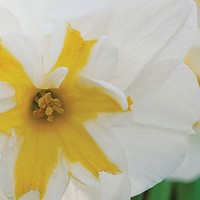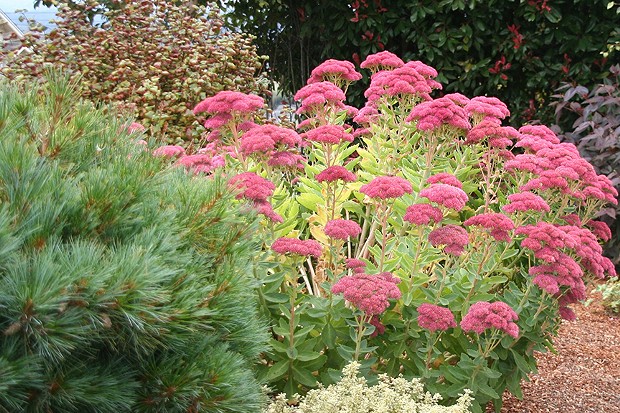[
{
"name": "Top Stories Video Pair",
"insertPoint": "7",
"component": "17087298",
"parentWrapperClass": "fdn-ads-inline-content-block",
"requiredCountToDisplay": "1"
}
]
Though that primal urge to get out in the garden isn't as strong now as it was in spring, November is one of the most active months in the garden, just because there's so much to prepare before the winter weather arrives. Pruning and cleanup, some judicious fertilizing and the start of bare-root season are just a few of the things to look forward to in November. Here are some of the most pressing tasks to tackle this month.
While it's still a little early to prune most trees and shrubs, Japanese maples bleed sap so easily in spring that it's actually better to prune them now. You can prune Japanese maples anytime after their leaves have dropped — the sooner the better.
Now is also the time to stabilize trees that might be damaged by winter winds. Remove any dead or broken branches now so they don't come crashing down, and consider thinning trees with brittle wood, such as sweetgum (Liquidambar), so wind can blow through them rather than whipping their canopies about like sails.
You can begin cutting back perennials such as Hosta, which dissolve into a mess of brown this time of year, but leave any plants with seed heads that birds may enjoy. Ornamental grasses, stonecrop (Sedum "Autumn Joy") and coneflower (Echinacea) are the usual suspects, having both sculptural interest and tasty seeds, but experiment with leaving different seed heads through the winter and see which plants are a hit.
As you cut back summer bulbs like Dahlia and Gladiolus, mark their spots with little flags or bamboo stakes so you don't slice into them in winter or spring. Unlike dormant perennials, they don't always leave a trace above ground.
Be extra vigilant about cleaning up under fruit trees and in vegetable gardens so pests and diseases don't overwinter. Avoid putting anything with a pest problem into your compost; instead bag it up and bring it to the green waste dump where the hotter temps will kill off any ick.
Though it's getting a little late to plant anything from those dinky six-packs, you can still get in some winter color if you choose plants in 4-inch pots or larger. Primrose, Paludosum daisy, ornamental cabbage and kale, Viola, pansy, Lobelia, and Cyclamen are all sturdy growers this time of year.
With the holidays coming, I also like to pick up some Amaryllis or paperwhites. Indoor bulbs are one of those things that are so easy to succeed with that they make you feel like a horticultural rock star. And $12.99 to feel like a horticultural rock star is a pretty small price to pay. Amiright?
If you're more into edibles, bare-root cane berries such as raspberries, blackberries and boysenberries are arriving at nurseries now. Yvonne over at Miller Farms raved about the "Triple Crown" variety of blackberry, which is named for its three crowning attributes: production, flavor, and vigor (if it was possible to use both bold and italics over the phone, she would have done so when describing the flavor – "sooooo good!"). Another variety to check out is the brand-new "Royalty Purple" raspberry, which is said to have tangy red fruit, which, if left on the cane, ripens even further to a sweet medium purple. I'm a sucker for anything either new or purple, so that one's a no-brainer for me!
If you're one of those uber-organized types that likes to think ahead, you can get ready for the rest of bare-root season by preparing your garden beds now for any bare-root trees, artichokes and such that you plan to buy. That way you don't have to haul compost around the garden once the rain makes everything wet and squishy.
Speaking of the rain, this is usually the month when we turn off irrigation systems and stop watering. That said, make sure you keep an eye on anything planted under a large overhang or on a covered porch. I don't know about you, but it pretty much never occurs to me to pull out a hose when it's dumping down rain, which leads to terrible gardener-guilt when I notice something wilting.
If the leaves piling up on your lawn are threatening to smother it, instead of the usual rake-and-haul-away routine, consider just running over them a few times with the mower. Shredded leaves break down faster yet still allow light and air to penetrate, so you get all of the nutrient and soil-softening benefits without killing the grass.
For extra bonus points, apply winterizing fertilizer to your lawn to encourage strong roots and pest resistance — an organic lawn fertilizer like Gardner and Bloome works great. If your lawn is struggling or you have used a lot of chemical fertilizers in the past, do a quick pH test as well. If your pH is less than 6, apply granular or quick lime (like Super Sweet). Why lime? Many of our Humboldt soils are naturally more acidic than lawns like, and having the right pH "unlocks" the nutrients already in the soil so the lawn can actually use them.
This is also the time to fertilize Rhododendrons. Singing Tree Gardens in McKinleyville recommends using an organic acidifying fertilizer to ensure your Rhododendrons have a steady stream of nutrients through winter. Don Wallace, one of the owners, also shares a counterintuitive tip: dolomitic lime. Experts have found that Rhododendron leaves are primarily composed of magnesium, so treatment with dolomitic lime, which is calcium and magnesium carbonate, greens up the leaves. When using the recommended dose of 1 to 2 cups around the drip line of each Rhododendron, he says, the effect on pH is negligible.
My last tip is my favorite, though it's not actually my own. In her latest book Succulents Simplified (love it!), Debra Lee Baldwin profiles a project from garden designer Laura Eubanks in which you take a pumpkin with a concave top, remove the stem, use glue to attach dry sphagnum moss to the top, and glue succulent cuttings into the moss to make an elegant and colorful "planted" pumpkin. The succulents root through the glue right into the moss. She suggests using a huge "Cinderella" pumpkin for display next to your front door, or tiny pumpkins to use as table decor. Just don't let your chickens near them – succulents get the three-chortle seal of approval from my birds and usually disappear within moments.
Genevieve Schmidt is a landscape designer and owns a fine landscape maintenance company in Arcata. She blogs over at www.NorthCoastGardening.com.
Speaking of Monthly Garden To-do
-

October Gardening To-Do List
Oct 2, 2014 -

September Gardening To-Do List
Sep 4, 2014 -

August Gardening To-Do List
Aug 7, 2014 - More »
more from the author
-
Gardening Grab Bag
What's new and cool in the gardening world
- Jun 2, 2016
-
Tackling Weeds Organically
- May 5, 2016
-
The Illusion of Water in the Low-Water Garden
- Apr 7, 2016
- More »

































